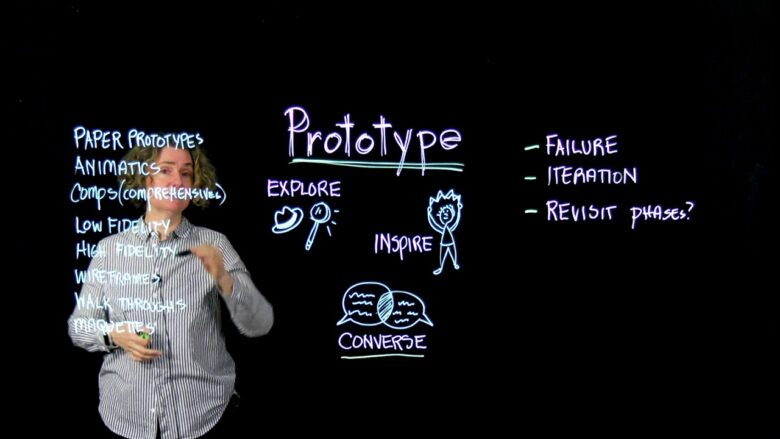Every inventor dreams of the moment their brainchild blossoms into a thriving, market-ready product. This journey, fraught with both excitement and challenges, signifies the culmination of sleepless nights, ceaseless trials, and boundless passion. Transitioning from a prototype to a market-ready offering isn’t merely a manufacturing step. It’s a testament to the inventor’s dedication and the transformation of an abstract concept into a tangible reality that serves a specific purpose and addresses a palpable need.
Contents
The Prototype Phase

Source: youtube.com
At the crux of every groundbreaking invention lies a humble prototype. It’s the first tangible incarnation of an idea, providing inventors a concrete means to test, evaluate, and iteratively enhance their creations. By visualizing and handling the prototype, inventors and potential stakeholders can gauge its feasibility, assess its appeal, and forecast its potential impact. However, creating a robust prototype goes beyond crafting a miniature version. It entails selecting suitable materials, embracing multiple iterations, and often, retracing steps to ensure every detail aligns with the envisioned final product.
Market Research
An invention might seem revolutionary in the lab or workshop, but will it resonate with its intended audience? Enter market research – the bridge between an inventor’s vision and the market’s reality. Conducting thorough market research ensures that the product meets genuine needs and fits seamlessly into its intended niche. By leveraging tools like surveys, focus groups, seeking more info about the subject, and competitor analysis, inventors can glean critical insights into consumer preferences, potential price points, and market gaps, thereby refining their offerings to cater explicitly to the target demographic.
Refining Your Invention

Source: radarmakassar.com
An invention’s journey from its initial prototype to a market-ready avatar is rarely linear. As feedback pours in and market dynamics evolve, the need for refinements becomes paramount. It’s through these iterative cycles of improvements that a product transforms, adapting to meet user expectations better, optimizing its features, and ensuring it remains both relevant and competitive. This refinement process, driven by real-world insights, ensures the product’s longevity and success in a bustling market landscape.
Intellectual Property
In the ever-evolving, cutthroat world of innovation, securing one’s intellectual property is not just a strategic move; it’s an imperative. An unprotected invention is a goldmine for imitators, running the risk of replication and potentially robbing the original inventor of both recognition and financial rewards. Beyond merely shielding an idea, patents, trademarks, and copyrights serve as competitive weapons. They provide inventors with a formidable strategic edge, enabling them to confidently stake their claim in the marketplace, broker lucrative licensing deals, and deter opportunistic competitors. Yet, this defense is not easily won. The path to securing intellectual property is intricate, woven with rigorous research, punctual filings, and the unyielding responsibility of maintenance and more data about it you can find at InventHelp.
Manufacturing Considerations

Source: ipknowledge.net
Embarking on the transition from a unique prototype to a mass-produced product is akin to scaling a mountain—daunting, yet rewarding. This metamorphosis necessitates a keen understanding of the ever-changing manufacturing landscape, a deliberate approach to selecting the most fitting production partners, and a proactive mindset anticipating scalability needs and potential bottlenecks. The weight of decisions, ranging from cherry-picking a manufacturer based on their expertise, track record, and credibility, to gauging the pace of scaling, cannot be understated. These choices will invariably influence the product’s quality, cost-effectiveness, and its reception in the market. Amidst the complexities of production, the golden rule remains: a harmonious balance between impeccable quality and efficient quantity is paramount.
Quality Control
In a market where competition is rife, a product’s enduring success isn’t merely anchored in its novelty, but profoundly in its unwavering quality. Quality control emerges as the vigilant sentry, steadfastly ensuring that each unit emerging from the production line isn’t just a product, but a testament to the brand’s promise, satisfying and even surpassing customer expectations. By implementing rigorous quality control measures, like unyielding audits, exacting benchmarks, and a culture of continuous improvement, brands not only uphold the product’s integrity but craft a fortress of trust. This fortification doesn’t just protect the product, it enhances the brand’s reputation, weaving threads of trust and loyalty among its consumer base.
Compliance and Regulations

Source: blog.ipleaders.in
Innovation’s exhilarating frontier, where boundaries are incessantly pushed and paradigms challenged, is also tempered by the guiding hand of regulations and standards. These seemingly labyrinthine guidelines, tailored for specific industries, are in place to ensure products meet rigorous safety, environmental, and ethical benchmarks, ensuring public trust and safety. Mastering this maze of regulations is no small feat—it demands diligent research, tapping into expert consultations, and a proactive approach, ensuring each product iteration remains not just compliant but exemplary. Such diligent adherence doesn’t just smoothen the market entry process; it weaves a narrative of reliability around the product, painting it as both groundbreaking and dependable.
Marketing and Branding
Even in a world awash with groundbreaking inventions, it is the spotlight of adept marketing that determines which innovations shine the brightest. Crafting an irresistible narrative, fortifying a ubiquitous digital presence, and unwaveringly echoing the product’s unique value proposition are the catalysts that can vault a product from being a workshop wonder to a globally recognized brand. In parallel, effective branding gives the invention its unique heartbeat. It clothes the product with a distinctive identity, setting it apart in a teeming market, and more critically, crafting emotional bridges with consumers. This symphony of recognition and emotion doesn’t just spark initial interest; it kindles brand loyalty, ensuring sustained traction and sales.
Distribution and Sales Channels

Source: marketing91.com
The final act of the invention’s journey is ensuring it reaches its intended audience. The product’s voyage from the inventor’s workshop into the eager hands of consumers is as intricate as the invention process itself. Strategically choosing distribution and sales channels demands a deep understanding of the target demographic’s preferences, real-time market dynamics, and the nuanced dance of logistics. The avenues are many: from bustling digital storefronts and alliances with established distribution titans to flexible hybrid models that offer the best of both worlds. Each chosen channel is a ripple in the market pond, influencing product visibility, accessibility, and eventually, its market success trajectory.
Funding and Investment
Capital is the lifeblood that sustains an invention’s journey from concept to consumer shelves. In the quest for funding, inventors must explore diverse avenues, from bootstrapping and crowdfunding to courting venture capitalists and angel investors. Each funding source brings its unique dynamics, implications, and expectations. Crafting a compelling pitch, showcasing the product’s potential, and building genuine relationships with financiers can catalyze the transition from prototype to market juggernaut.
